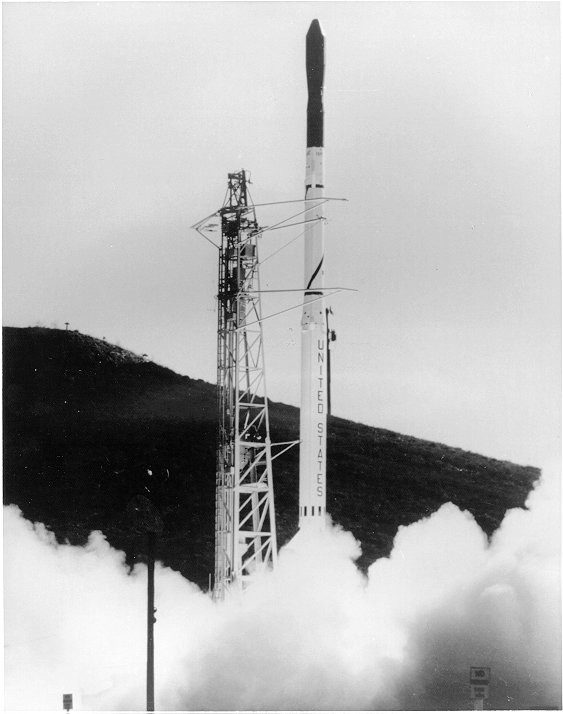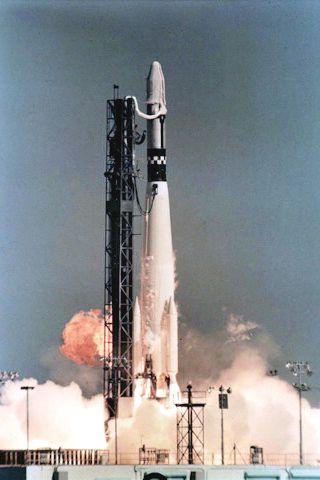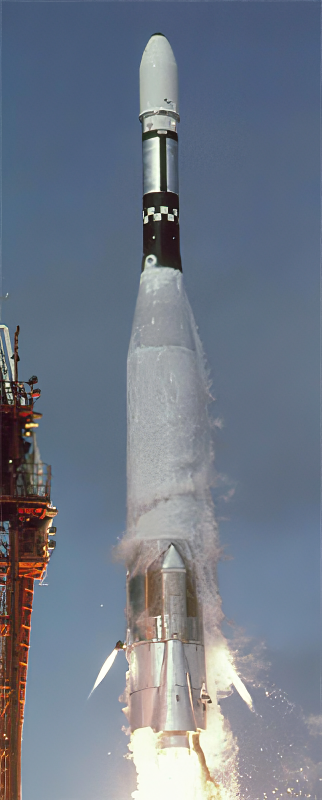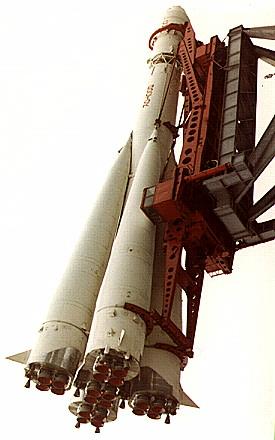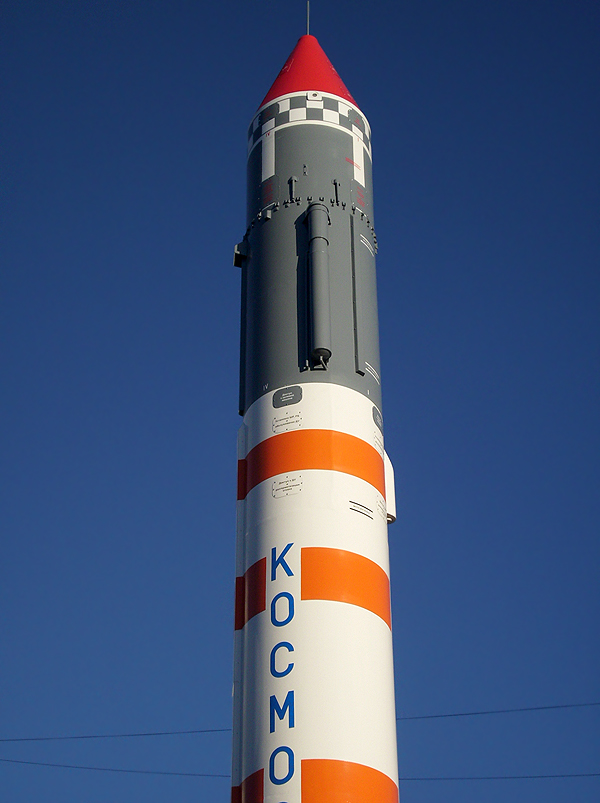Previous Spaceflight Launches
Filter by Agency, Locations or Vehicles
Show All LaunchesScout X-4 | Explorer 24 & 25
Vought | United States of AmericaVandenberg SFB, CA, USA
Nov. 21, 1964, 5:09 p.m.
Status: Launch Successful
Mission:
Explorer 24 was placed in orbit together with Explorer 25 from a single launch vehicle. Explorer 24 was identical in configuration to the previously launched balloon satellites Explorer 9 and 19. The spacecraft was 3.6 m in diameter, was built of alternating layers of aluminum foil and plastic film, and was covered uniformly with 5.1-cm white dots for thermal control. It was designed to yield atmospheric density near perigee as a function of space and time from sequential observations of the sphere's position in orbit.
Elliptical OrbitThor SLV-2A Agena D | KH-4A 14
McDonnell Douglas | United States of AmericaVandenberg SFB, CA, USA
Nov. 18, 1964, 8:35 p.m.
Nike Cajun | Trailblazer Pellet
National Aeronautics and Space Administration | United States of AmericaWallops Flight Facility, Virginia, USA
Nov. 7, 1964, 1:38 a.m.
Scout X-4 | Explorer 23
Vought | United States of AmericaWallops Flight Facility, Virginia, USA
Nov. 6, 1964, 12:02 p.m.
Atlas Agena D | Mariner 3
Convair | United States of AmericaCape Canaveral SFS, FL, USA
Nov. 5, 1964, 7:22 p.m.
Thor SLV-2A Agena D | P-698BK Group 3-D 1
McDonnell Douglas | United States of AmericaVandenberg SFB, CA, USA
Nov. 4, 1964, 2:12 a.m.
Thor SLV-2A Agena D | KH-4A 13
McDonnell Douglas | United States of AmericaVandenberg SFB, CA, USA
Nov. 2, 1964, 9:30 p.m.
Vostok 8A92 | Zenit-2 24
RKK Energiya | RussiaBaikonur Cosmodrome, Republic of Kazakhstan
Oct. 28, 1964, 10:40 a.m.
Kosmos-2I 63S1 | DS-MG 2
Strategic Rocket Forces | RussiaKapustin Yar, Russian Federation
Oct. 24, 1964, 5:17 a.m.
Atlas Agena D | KH-7 13
Convair | United States of AmericaVandenberg SFB, CA, USA
Oct. 23, 1964, 6:27 p.m.
Status: Launch Successful
Mission:
The Program 206 satellite, carrying the KH-7 (Keyhole 7) camera system (codenamed Gambit-1), was the first successful high resolution space reconnaissance program. It was managed by NRO's Program A, the USAF-led segment of the National Reconnaissance Program managed from Los Angeles AFB in El Segundo, California.
Sun-Synchronous Orbit